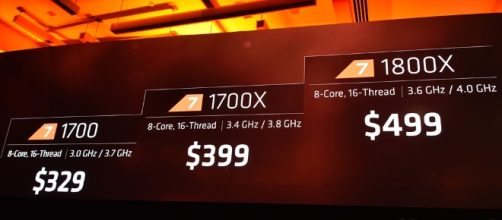With the new AMD Ryzen processors preparing to hit the market soon, Intel is quietly Making Moves to cut prices to compete more effectively with what AMD has to offer. This shouldn’t come as much of a surprise since Ryzen, from our understanding, offers better performance for less.
The first chips from AMD will be the Ryzen 7 processors that are designed to compete with Intel’s high-end line. Several benchmarks have claimed that the new Ryzen 7 processors are faster than what Intel has on the market today, and to make matters worse, these processors are coming in at a lower cost.
Price cuts are competitive
New reports claim Intel is cutting prices of its Core i5 and Core i7 line. Apparently, the Core i7-7700K has fallen in price to $300 from $380, while the Core i5-7600 has slipped to $200 from $270. As for the Core i5-6600K, it has slipped to $179, from $270.
At the moment, it is not yet clear if the price cuts are only for promotional purposes, or if the cuts are permanent. It would make sense for Intel to cut prices permanently across the board, because of the current crop of reviews, for the most part, are praising Ryzen as the return of AMD after years of stagnation.
Only one biggest problem reviewers have come across with Ryzen, and that’s its inability to compete with Intel products in the gaming department.
However, this could be due to Ryzen being new to the market, and games have yet to be optimized for the new processor.
Would the price cut matter?
Intel is the market leader, so cutting prices could undermine AMD in more ways than one. However, those who are fans of AMD would likely continue to gravitate towards Ryzen, while those who are loyal to Intel won’t look into AMD’s direction any time soon.
On the other hand, people who are not loyal to any product manufacturer might decide to go with Intel as the market leader while some who are looking to take part in the eight core experience could jump on the Ryzen gravy train.
At the end of the day, AMD has the edge in the price department, but Intel is the market leader, and as such, is more capable of navigating its way through a price war.

